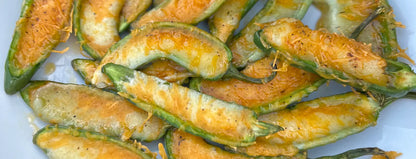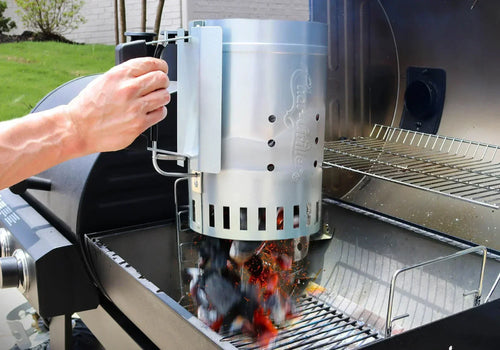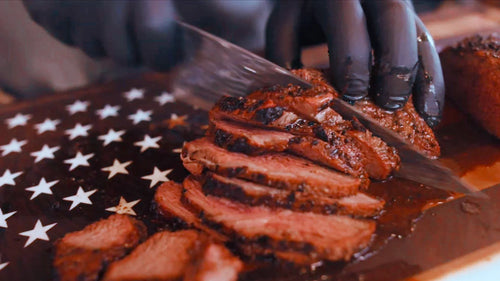In order to cut your meat and poultry to perfection, it’s important to keep your knives sharp and well maintained. After some wear and tear, knives naturally begin to dull, which can be dangerous. Unfortunately, there’s no way to completely prevent dulling, so we’re going to teach you how to sharpen your knife to keep it in mint condition.
As with anything that involves knives, use the proper precautions to avoid injury.
How to Sharpen with a Whetstone:
A whetstone is a rectangular block that works almost like sandpaper, helping to refine the cutting edge of the knife's blade. Most whetstones need to be soaked in water before every use, so be sure to check what your whetstone requires before beginning. If your stone requires soaking, submerge it in water for 5-10 minutes, depending on the coarseness of your stone. Don't soak for too long, as this can cause cracking. You'll know when the soaking process is completed once no bubbles are coming out of the whetstone.
Once adequately soaked, place the stone on a wet cloth for stability while sharpening. A stone base is always beneficial, as it raises the elevation of the stone to give you a better angle when sharpening. Once you have your setup prepared, it's time to sharpen. First, hold your knife with your index finger resting on the spine and thumb flat on the blade, while all three remaining fingers grasp the handle. Two or three fingers from your other hand should press on the knife to apply pressure when dragging the blade over the stone. Then, at a 20-degree angle, gently drag each side of the knife against the whetstone a few times. Repeat this process a few times on each side of the blade.
How to Use a Honing Rod:
Rather than sharpening, a honing rod “corrects” or “trues” the edge of a knife. A honing rod can help return a blade to its original condition by smoothing the edge. To use the rod, hold it vertically, so the tip rests on your work surface and grip the handle firmly. Then, lightly press the bottom of the knife’s blade against the honing rod at a 15–20-degree angle. Once you have the correct positioning, pull the knife down towards you; follow through to the tip of the blade. Repeat the motion on the other side of the rod.
How to Sharpen with a Knife Sharpener:
If you aren't interested in using a whetstone or honing rod, a knife sharpener is a great quick-fix solution for a dull knife. To use this tool, press the knife's blade into the coarse side of the sharpener, and pull it in towards you a few times. Then, move to the fine side and repeat the motion. Unfortunately, while the knife sharpener is handy, it's not always the best tool for your more expensive knives.
Sharpening Knives with Everyday Items:
If you don’t have a whetstone or knife sharpener lying around the house, some household items can sharpen a knife as well. Some of these items include coffee mugs, sandpaper, nail files, smooth stone, etc. These are all times you probably have somewhere at home, so if you’re up for a fun challenge, they can sharpen your knife.
The coffee mug is one of the most popular household items to sharpen a knife with. Ensure the mug you use is ceramic and that the bottom doesn’t have a super glossy coating. Keep in mind that the bottom will get a little scratched. Once you have your mug picked out, take your knife and hold the blade at about 20 degrees. Then, slowly and lightly run the blade along the bottom of the cup as if you were using a whetstone.
Keeping your knife sharp and in ready condition takes discipline and can be tricky at first, but it's so essential to your safety and cut preciseness to sharpen your knives a few times a year, depending on how often you use them.

 Flat Iron® Portable 17-inch Gas Griddle
Flat Iron® Portable 17-inch Gas Griddle
 Flat Iron® Premium Gas Griddle
Flat Iron® Premium Gas Griddle
 Flat Iron® Gas Griddle with Lid
Flat Iron® Gas Griddle with Lid


 Sauced and No Sauce Spare Ribs
Sauced and No Sauce Spare Ribs
 Pulled Pork n' Bacon Cheesy Sliders
Pulled Pork n' Bacon Cheesy Sliders
 Smoked Pulled Leg of Lamb
Smoked Pulled Leg of Lamb





